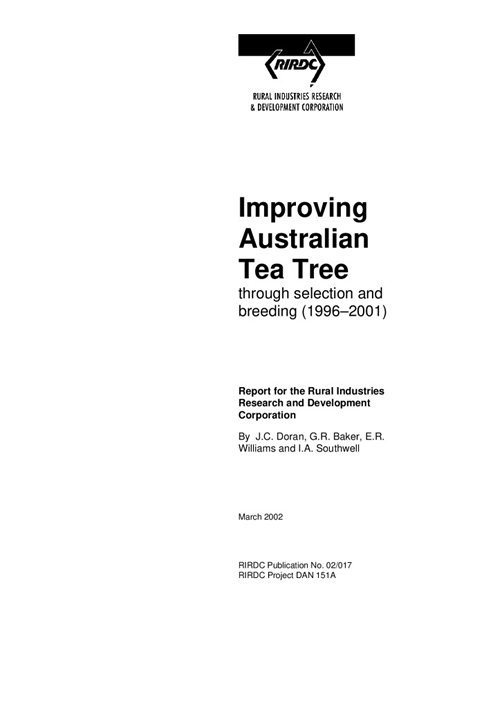Virucidal effects of tea tree oil
Consumer demand for natural products such as Australian tea tree oil (Melaleuca alternifolia) is driving researchers to investigate their efficacy against respiratory viruses in humans...
 TEA TREE OIL
TEA TREE OIL 
104 pages
Published: 1 Mar 2002
Author(s): Doran, J.C., Baker, G.R., and.., E.R. Williams
Download report PDF
DownloadPurchase a hard copy - AUD $55.00
The Australian tea tree industry has become an important regional industry in Australia with a farmgate
value in excess of $16 M and ninety percent of the product exported. The primary output of the
industry is a foliar essential oil sourced from plantations of Melaleuca alternifolia, a small native,
swamp dwelling and riparian tree from northern New South Wales and southeastern Queensland. The
oil is noted for its anti-microbial activity and finds use in a wide array of medicinal and personal care
preparations.
There are some 300 producers in the industry currently with a total plantation estate of some 6000 ha.
Average plantation production of 148 kg/ha has long been recognised as below potential. This
average yield was viable while prices remained high in the industry, but economic analyses showed
that it would not be sustainable should the prices fall, as happened in 1999/2000. RIRDC and ATTIA
recognised this and the potential of breeding to provide progressive, economically significant gains in
oil yield and quality of Melaleuca alternifolia when they supported the first phase of breeding in May
1993 (three year project). They renewed their funding support for a second phase of breeding (five
year project) commencing in July 1996, following the successful review of the first phase.
This is a report of the second phase of breeding (1996 to 2001) to improve M. alternifolia for oil
production.